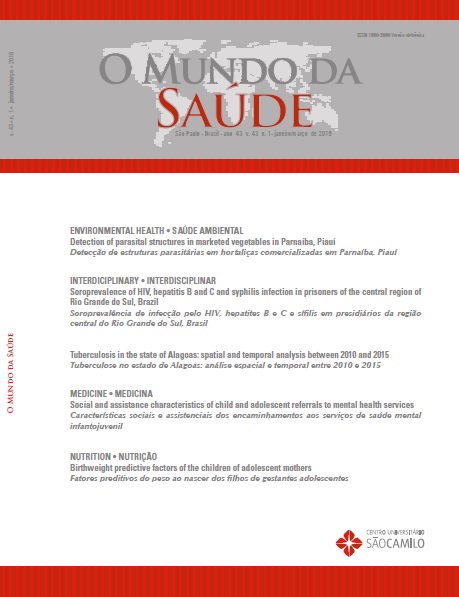Nutritional status of adolescents related to cardiovascular risk and body image
DOI:
https://doi.org/10.15343/0104-7809.20194301249264Keywords:
Body Mass Index, Body Image, Cardiovascular Diseases, AdolescentsAbstract
The purpose of this study was to identify the relationship of nutritional status to body image and to cardiovascular risk of adolescents in public and private schools. This was a descriptive, cross-sectional and quantitative study performed in two schools from the State of São Paulo, involving 546 teenagers from both sexes. The Thompson & Gray device was used to identify body image; anthropometric data such as weight, height and the waist circumference were assessed. Statistical analysis used the following tests: Student t, Fisher, chi-squared and multiple correspondence analysis between variables collected from adolescents in both schools. In both schools, female gender, eutrophic nutritional status, absence of cardiovascular risk, and dissatisfaction with body image for overweight were prevalent. When comparing schools, the public schools showed more students with underweight and obese body mass indices (BMI), higher cardiovascular risk index and body image dissatisfaction related to thinness. On the other hand, the private school presented more students with a BMI of overweight, and dissatisfaction due to being overweight. The conclusion is that regardless of the nutritional status of adolescents, there is body image dissatisfaction in both schools, and high cardiovascular risk is predominant in the public school in overweight and obese students and may lead to cardiovascular diseases in adulthood.






























